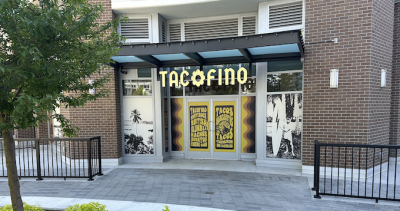Arts Club's Buddy: The Buddy Holly Story brings rock 'n' roll edge
By Alan Janes and Rob Bettinson. Directed by Bill Millerd. An Arts Club Theatre production. At the Stanley Industrial Alliance Stage on Tuesday, May 18. Continues until July 11
In the Arts Club’s production of Buddy: The Buddy Holly Story, Zachary Stevenson makes the title character feel like a geeky, sexy, punk-rock rebel. All of a sudden, you understand in your bones why musical conservatives were afraid of Holly’s rock ’n’ roll. And, on top of that, Stevenson can sing. He playfully hiccups his way through “That’ll Be the Day”, croons a touching unplugged version of “True Love Ways”, and leaps around the stage like a prototypical Mick Jagger in “Oh, Boy!” The guy is a knockout and he’s the very best reason to see this show.
There are other strengths as well. Michael Scholar Jr. is having the time of his life playing Ritchie Valens; he risks dislocating his hips in his no-holds-barred version of “La Bamba”, which is one of the highlights of the evening. And, although she is underused in the tiny role of Holly’s wife, Maria-Elena, Elena Juatco is riveting, even when she’s doing double duty in the chorus. The woman pours out megawatts of energy and there’s a compelling joy in her performance.
Bill Millerd directs a big, bold production, with a 14-member cast and a tight, four-piece band. The show is saturated with ’50s colour: set designer Ted Roberts provides a big turquoise bandstand for Holly’s final concert, and costumer Rebekka Sorenson puts female chorus members in frothy purple dresses that look as tasty as grape snow cones.
Don’t expect a story, though. Narratively, Buddy is surprisingly hollow. No relationships are developed in any depth. Basically, Buddy is a revue, a lineup of songs, several of which were made famous by artists other than Holly.
In the script that does exist, setups are often formulaic. For instance, when Holly and his band, the Crickets, show up at the Apollo Theater in Harlem—this is the late ’50s—the management is shocked to find that they’re all white. Buddy humbly tells the crowd that he hopes they will like his music, and then acts all surprised when they do. To keep the entertainment moving, writers Alan Janes and Rob Bettinson stoop to crude audience involvement. Characters repeatedly exhort the public to clap along, and emcees of various stripes regularly holler, “Is everybody having a good time?”
My post-show answer is that, yes, I had a good time with individual performances and musical numbers, but I would have had a much better time if those elements had been set within a more sophisticated script. It’s hard to yell all of that out in the theatre, though.















Comments